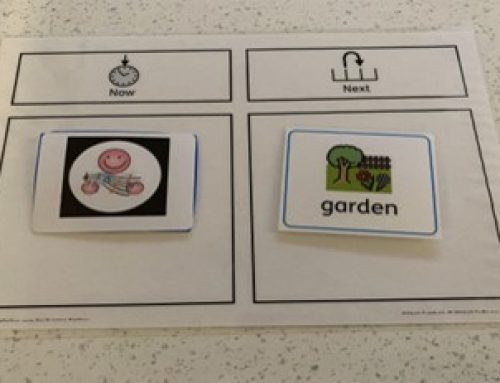The Importance of Keeping to the Beat of the Music
Question: I know I need to keep to the beat of the music when using TACPAC but what happens if I don’t?
If you’re reading this, you probably don’t have Sensory Processing Disorder to the extent that it disturbs you. The disturbing bit about this disorder is the unknown. The surprises. The unexpected – however “nice” and “fun” this may appear to you. You might be a surprise junky; a creator of instant alternatives; a skilled adjuster to a new set of circumstances, but the person you are working with does not like to do this. Does not like to suddenly have to adjust, to change, to be told it’s going to be this way today and that way tomorrow.
How does this apply to TACPAC?
In order to gain, and then maintain, the trust we are looking for in our communicating TACPAC partnership, we owe it to our partners to stick to the deal we set up in the beginning. This ought to be: The music we are both sharing has a beat, and I will keep to THAT beat, and not use something different that you don’t know about and that neither of us can trust. In this way, we both know what’s coming, we both know there are no surprises, there is nothing new or strange to adjust to, and we can get on with the art of communicating in a sensory way.
What happens when we don’t keep to the beat?
If we change the beat when we are using the objects with our partners, the road is rough. The stones are jagged and our partners have to adjust to our whims and sudden fickle impulses. Why make our partners work like that in a TACPAC session when they are working like that at all other times to avoid the twists and turns of the unpredictable.? We have the perfect environment for sensory alignment, for sensory processing. If we are going to change the beat, the heartbeat, the glue that holds the communication together, then we are engaging in sensory bombardment, not sensory alignment.
There are no rules in TACPAC but this one: keep to the beat. Give your partners a straight road to travel on, continue with the deal you set up in the first place, and travel smoothly and predictably. You will both be rewarded with…….relaxation! The limbic system will relax, cortisol levels drop, and you may even get a smile, after a while…..if you’re trustworthy!
Further reading and information
If you would like more information about TACPAC, how it works or anything else, please contact us by clicking here.
For those of you who are interested in the research that backs up the theory behind TACPAC here is one of many articles you might find interesting:
Sensory overload and control
“Children with sensory integration disorders often respond by trying to control what’s happening. They would much prefer an environment that’s very predictable and consistent from day to day.”
Miller, L. J., Anzalone, M. E., Lane, S. J., Cermak, S. A., & Osten, E. T. (2007) ‘Concept evolution in sensory integration: A proposed nosology for diagnosis’, American Journal of Occupational Therapy, 61(2), 135-140






















